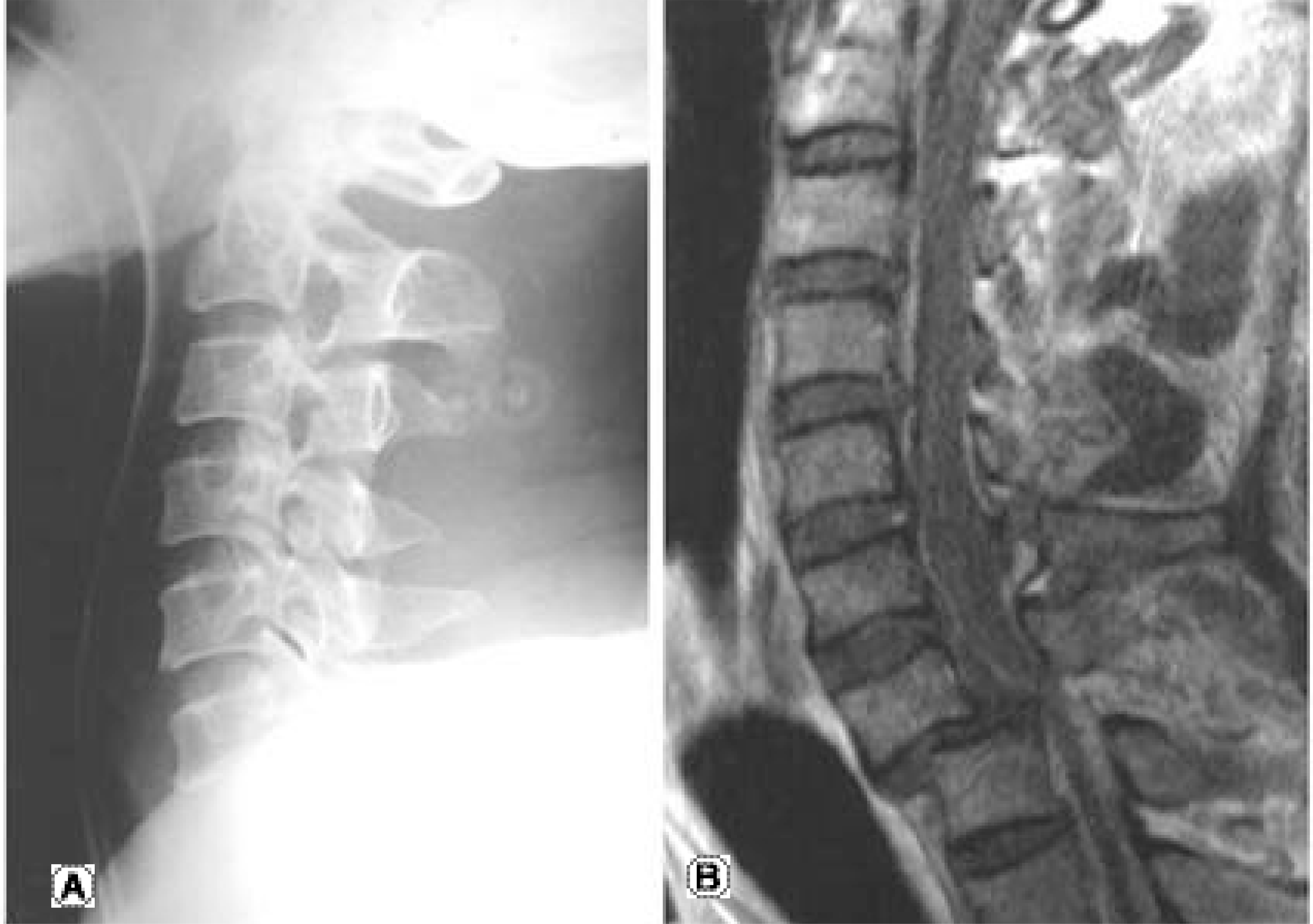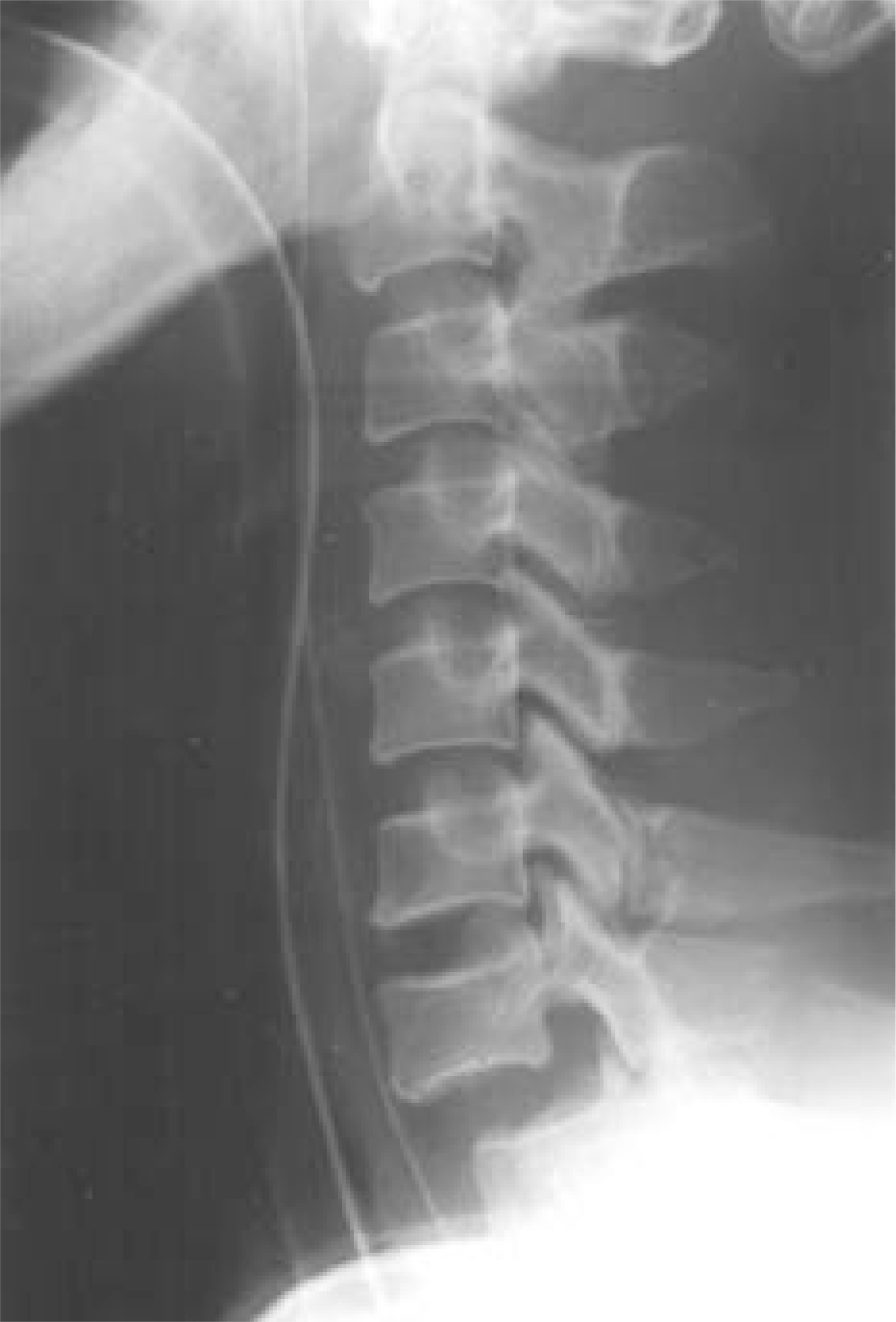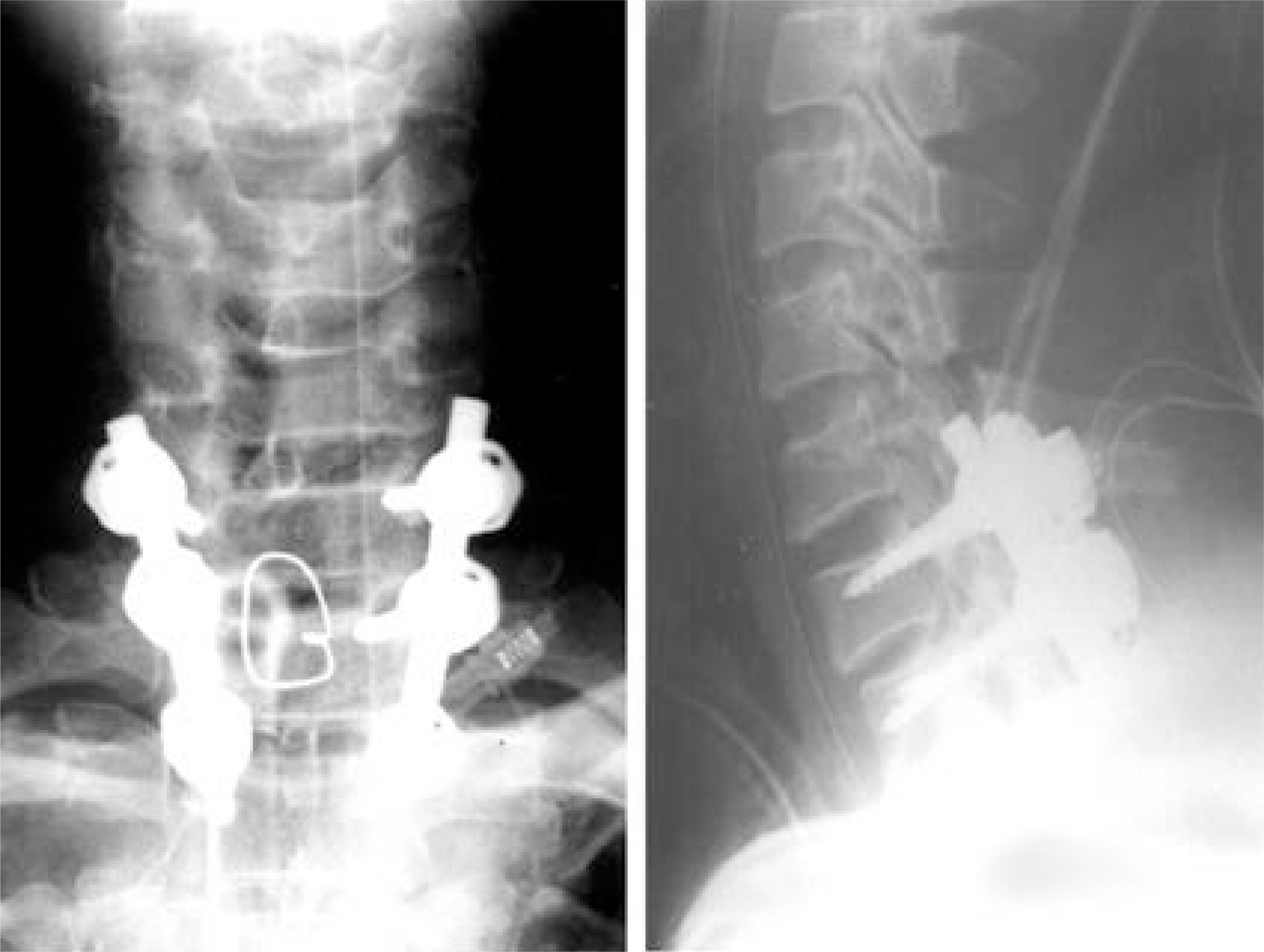Abstract
A complete fracture dislocation at the cervicothoracic junction is rare and accompanied by severe spinal cord injury. This region is difficult to image with plain radiography, and to immobilize with external orthosis due to the biomechanical forces exerted in this transitional portion of the spinal column.
We experienced a rare case in 52- year- old male victim of a car accident. He sustained paraplegia, and complained of dyspnea and neck pain of 10 days duration at another hospital. The delayed clinical rediagnosis was a C6 and 7 spinous process fracture and a cervicothoracic fracture dislocation, with complete transection of spinal cord, which was based on a clinical examination, simple radiography, CT and MRI.
Skeletal traction was immediately applied, followed by a posterior pedicle screw to stabilize the spine and secure the grafts. Rehabilitation was initiated and the dysphagia and dyspnea, due to aspiration pneumonia, were improved, but no neurologic recovery was made after the 1st postoperative year.
REFERENCES
1). Bailey AS, Stanescu S, Yeasting R, Ebraheim NA, Jackson WT. Anatomic relationships of the cervicothoracic junction. Spine. 1995; 20:1431–1439.

2). Baker RP, Grubb RL. Complete fracture-dislocation of cervical spine without permanent neurological sequelae. J Neurosurg. 1983; 58:760–762.

3). Bhatia S, Sharma BS, Mathuriya SN, Pathak A, Khosia VK. Brust fracture-dislocation of the lower cervical spine with no neurological deficit. Paraplegia. 1993; 32:542–544.
4). Bohlman HH, Freehafer A, DeJak J. The results of treatment of acute injuries of the upper thoracic spine with paralysis. J Bone Joint Surg. 1985; 67-A:360–369.

5). Brackman R, Vinken PJ. Unilateral facet interlocking in the lower cervical spine. J Bone Joint Surg. 1967; 49-B:249–257.
6). Bueff HU, Lotz JC, Colliou OK, et al. Instrumentation of the cervicothoracic junction after destabilization. Spine. 1995; 20:1789–1792.

7). Burke DC, Berryman D. The place of closed manipulation in the management of flexion-rotation dislocation of the cervical spine. J Bone Joint Surg. 1971; 53-B:165–182.
8). Dall DM. Injuries of the cervical spine II. Does anatomical reduction of the bony injuries improve the prognosis for spinal cord recovery? S Arf Med J. 1972; 46:1083–1090.
9). Delamarter RB, Batzdorf U, Bohlman HH. The C7-T1 junction: problems with diagnosis, visualization, instability and decompression. Orthop Trans. 1989; 13:218.
11). Evans DK. Reduction of cervical dislocation. J Bone Joint Surg. 1961; 43-B:552–555.
12). Forysth HF. Extension injuries of the cervical spine. J Bone Joint Surg. 1964; 46-A:1792–1797.
13). Hong YP, Park JW, Kim BJ, Lee YK, Seo KY. Fracture and dislocation of cervical spine. J Kor Orthop Assoc. 1982; 17(6):1089–1100.
14). Jeanneret B, Gebhard JS, Magerl F. T ran spedi cu lar screw fixation of articular mass fracture-Separation: Result of an anatomical study and operative technique. J Spinal Disord. 1994; 7:222–229.
15). Jovanovic MS. A comparative study of the foramen trans - versarium of the sixth and seventh cervical vertebrae. Surg Radiol Anat. 1990; 12:167–172.
16). Kreshak JL, Kim DH, Lindsey DP, et al. Posterior stabilization at the cervicothoracic junction. Spine. 2002; 27:2763–2770.

17). Nichols CG, Young DH, Schiller WR. Evaluation of cervicothoracic junction injury. Ann Emerg Med. 1987; 16(6):640–642.

18). Panjabi MM, Duranceau J, Goel V, Oxland T, Takata K. Cervical human vertebrae: Quantitative three-dimensional anatomy of the middle and lower regions. Spine. 1991; 16:861–869.

19). Rickenbacher J, Landolt AM, Theiler K. A p plied Anatomy of the Back. New York: Springer-Verlag;269. 1985.




 PDF
PDF ePub
ePub Citation
Citation Print
Print





 XML Download
XML Download